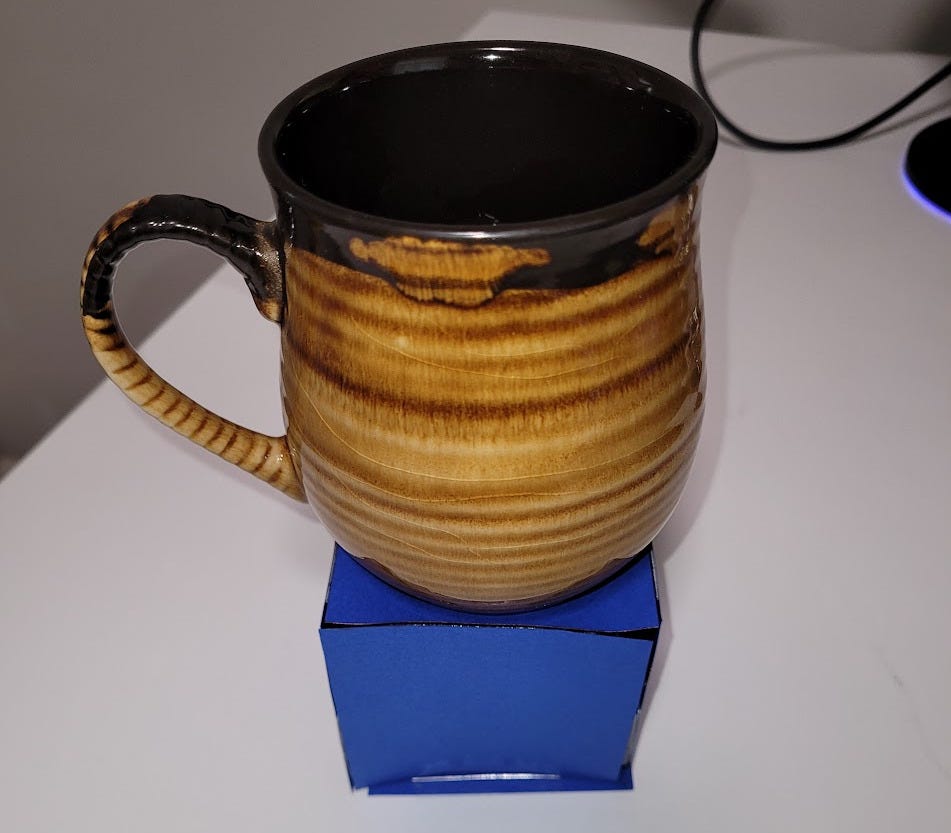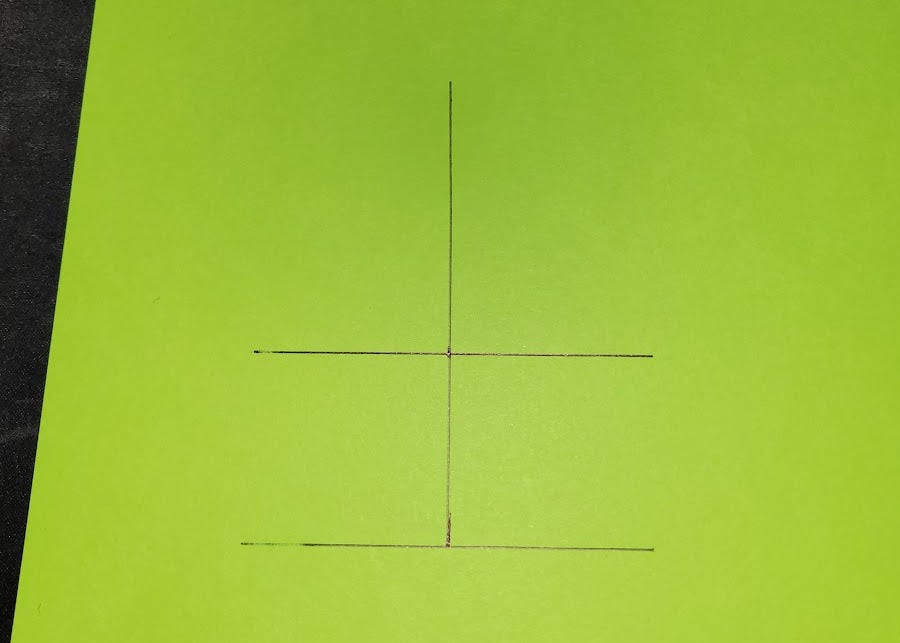The Significance of the Cuboctahedron
Also, a crafting guide to making the most significant shape in the universe
This is a standalone article supplementary to Meridians:
EP5: “From Tiny Houses to Mensa: Buckminster Fuller's spontaneous cooperation”
To listen to the episode, search for "Meridians" wherever you get your podcasts.
Spotify | Apple | Podcast Addict | Pocket Casts
Buckminster Fuller was a visionary, a futurist and really, a genius. However he would ‘simply’ call himself a "comprehensive anticipatory design scientist." He had a masterful understanding of geometry, from the outside it almost seems like it was intuitive to him. He understood three dimensional space in a way that few did. In his studies he identified certain shapes that were unique, special, which helped him design architecture and understand the world. He considered the Cuboctahedron, which he called the ‘Vector Equilibrium’, to be one of the most significant geometric shapes in the universe.
Fuller used the phrase ‘Vector Equlibrium’ to describe the cuboctahedron because it represents a state of perfect equilibrium where outward radial forces are balanced by circumferential restraining forces.
Vectors? Forces? What does he mean by that?
First, let’s describe the shape, it has 14 sides, 8 equilateral triangle faces and 6 square faces. There are 12 vectors in a Cuboctahedron that start at the point in the center and radiate out in the direction of the vertices. These vectors are all equal and they all have an opposite. Because of this, it’s considered to be at ‘equilibrium.’ It is the only polyhedron where the distance from its center to any vertex is the same as the length of its edge segments.
To understand why this is so significant, let us examine an example. Think about a rectangular or cube building, like an old garage or shed.
Now imagine pushing on one of the walls of this old garage, maybe its really old, maybe you’re just really strong, either way it would start to look like a Parallelepiped, as shown below. Eventually, with enough pressure, it would collapse.
The problem with cube-shaped structures is that without proper reinforcement or triangulation from corner to corner, they’ll deform under stress. The lack of vector equilibrium means forces are not evenly distributed throughout the structure, potentially leading to weak points. A cuboctahedron is much stronger by comparison.
I did a very non-scientific experiment to demonstrate the significance of this balancing of forces. Here’s my coffee cup, half full, resting on a cardstock paper cuboctahedron that I made.

Its holding up the cup very well. The triangular faces hold even better. I could probably have a larger cup or a thermos on it and it would be fine.
Here’s the same cup sitting on a cube with faces that are three inches by 3 inches (the cuboctahedron’s edges are all three inches as well).
The coffee cup immediately deformed the cube. I didn’t leave it sit on the cube very long. It had water in it and I didn’t want a mess. You could imagine that it wouldn’t really make much difference if I’d have made that cube larger (probably would have been worse!)
On the other hand, I left the coffee cup on the cuboctahedron for several minutes without worry. Sure, both would buckle under enough weight eventually, but the amount of force that the cuboctahedron could sustain was much higher.
It was Fullers understanding of these forces that made him so successful at making such large efficient geodesic structures, such as the Montreal Biosphere.
The Biosphere is based on an icosahedron, which Fuller also considered a very important shape. It is a 20-sided shape formed by interspersing pentagons into a hexagonal grid. The Biosphere itself is described as a "32-frequency, double-layer dome". This refers to the number of triangular subdivisions between vertices of the underlying icosahedral structure.
It was was originally built as the United States Pavilion for ‘Expo 67’, a world's fair event held in Montreal to celebrate Canada's centennial. It is the largest geodesic Biosphere in the world, measuring at 76 meters in diameter and 62 meters in height.
Buckminster Fuller took his understanding of geometry and applied it to his architecure and design. He pushed this understanding even further and found that they were fundemental in the way that nature itself works. His wider understanding of the universe is very complex and hard to understand (for me at least), but you can see by the results that he understood something very deep and he shared that understanding in the best ways that he could, through is architecture.
Craft Time! How to Make Your Own Cuboctahedron
Its fairly easy to make your own cuboctohedron. You just need a few supplies. It takes about an hour or less, depending on how dilligent you are.
Cardstock
pen/pencil
double sided tape (glue could work)
scissors
ruler
1. Make a template for the equilateral triangles
I found it easiest to just make a template for the triangles so that I could just quickly trace them later with a pen. Note: There are other ways to make this triangle, such as with a drawing compass, but I did not have one. You just need an equilateral triangle with 3 inch sides for this template.
First you need to draw a line, 3 inches long and draw a marking line to bisect it.
Then do a parallel line above also bisecting it. Then draw a line up the middle.
Now from the edges of the first line, line up the endpoint with a 3 inch segment that intersects the middle line.
Do the same on the other side and you’ll have an equilateral triangle with 3 inch sides.
Now you just have to cut this out and there’s your template. Creating a template is nice because you can save it and use it over and over again to make a bunch of octahedrons!
2. Make the 8 Triangles out of cardstock.
Trace the triangle using the template to make 8 more triangles. Leave room for the flaps (thats how this thing will get put together!)
The Flaps (the colored in parts) don’t need to be perfect so I didn’t bother with measurement instructions, about a half an inch is good and just make sure they’re tapered inward so that they don’t hit the sides when folding.
Then just cut them all out to look like so:

You’ll want to fold them along the triangles edges using a ruler (note how they are folded in the above and below pictures.
3. Make the Square Faces
This part is pretty easy and doesn’t require you to make a template (unless you want to).
Draw a grid of lines where you have 6 squares all having lengths of 3 inches on all sides.
Cut out all 6 squares. Now we have all the faces we need to start building! You should have 6 3x3 inch squares and 8 3-inch equilateral triangles with the flaps folded.
4. Assembly
It goes together fairly easily with the double sided tape. You’ll figure out the structure pretty quickly as you follow the pictures below. Just remember, no square directly attaches to another square and same goes with the triangles.
Check out the results below! I have no idea what I’m going to do with this but I sure had fun making it. Thanks for following along. It would make my day if you shared the cuboctahedron that you made. Don’t be a stranger. Be sure to share your cuboctahedron if you make one! Thanks for reading.
The results:




































Very cool - thanks for this.